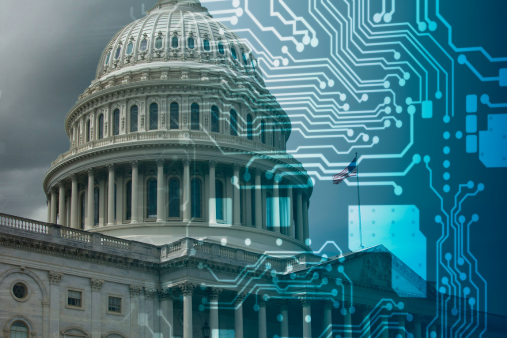1. “Section 301” China Tariffs
On July 6, many U.S. companies woke up to a 25 percent tariff on certain imported goods from China as the result of a “Section 301” investigation of China’s unfair intellectual property and technology practices. Later that same day, the United States Trade Representative (USTR) announced the details for requesting exclusions from the tariffs for specific products.
The United States imposed 25 percent tariffs on the first list of products, called Annex A, announced in a June 20 notice. In the same notice, USTR issued another list of products, called Annex C, for comment and potential imposition of 25 percent tariffs. Together, the lists of Chinese goods targeted total approximately $50 billion in annual imports to the United States covering more than 1,300 basket categories of products.
Annex A Products
Annex A includes $34 billion worth of Chinese-origin goods that are now subject to the 25 percent tariff. These items remain eligible for duty drawback, trade preference programs, and Foreign Trade Zones, pursuant to U.S. Customs’ guidance.
On July 6, USTR announced the details of the Section 301 product exclusion process for items on Annex A. As described below, this process provides opportunities for both importers and domestic producers. It is important to note that any exclusions granted will apply to all such excluded products imported during the applicable one-year period, i.e., the exclusion is not limited to use only by the requester, and the exclusion will apply retroactively to July 6, 2018.
What Importers Can Do:
Importers can seek a one-year product exclusion of particular items contained on Annex A. A request may be sought as follows:
• Request a product exclusion from the Section 301 tariffs, which must be filed within the next 90 days or by October 9, 2018.
• File a supportive response to a favorable product exclusion request filed by another party, which can be filed within 14 days from the date the request is posted on Regulations.gov.
• After the close of the 14-day response period, parties have seven days to reply to any posted responses to the request.
Importers are strongly encouraged to consider using the exclusion form that USTR will issue in the coming days. Product exclusion requests must provide the following information:
• Identification of the particular product (one item per request), including distinguishing physical dimensions, composition, or other characteristics, and its 10-digit subheading of the HTSUS;
• Information to aid U.S. Customs and Border Protection to administer the exclusion; and
• Annual quantity and value data of the Chinese-origin product over the past three years.
USTR has recommended that an exclusion request also provide the rationale or basis for the exclusion, including but not limited to:
(i) Whether the product is only available in China, or in the United States and/or third countries;
(ii) Whether additional duties will cause severe economic harm to the requestor or other U.S. interests;
(iii) Whether the product is related to the “Made in China 2025” or other Chinese industrial programs; or
(iv) Any other information or data relevant to the request.
What Domestic Producers Can Do:
• Monitor the Regulations.gov docket no. USTR-2018-0025 to determine whether competing Chinese imports are the subject of any product exclusions.
• File a response with objections to a product exclusion request, which can be filed within 14 days from the date on which the request is posted on Regulations.gov.
• Parties can file a reply to any responses received regarding the exclusion request within 7 days.
Annex C Products
Section 301 Annex C contains a new list of products that cover approximately $16 billion worth of trade and more than 500 new categories that are being considered for the imposition of additional 25 percent tariffs. The following is the schedule for the review of the Annex C products under consideration:
• July 23, 2018: Due date for submission of written comments
• July 24, 2018: The Section 301 Committee will conduct a public hearing at the U.S. International Trade Commission, in Washington, D.C., at 9:30 a.m. EST
• July 31, 2018: Due date for submission of post-hearing rebuttal comments
2. Retaliation by China and Further U.S. Retaliation
Since the imposition of the 25 percent Section 301 duties on Chinese goods, China retaliated with reciprocal tariffs on $50 billion worth of annual U.S. products exported to China, targeting mostly agricultural products, including soybeans and pork. Additionally, China indicated that retaliatory methods do not only include additional duties, but also heightened qualitative regulatory scrutiny of U.S. products processed by Chinese customs and U.S. businesses within China.
In response, President Trump further instructed USTR to identify $200 billion and then $450 billion worth of trade with China to be considered for tariffs. USTR also initiated proceedings at the World Trade Organization against China’s practices.
Simultaneously, the U.S. Congress is legislating expansive revisions to the U.S. law administered by the Committee on Foreign Investment in the United States (CFIUS) to review direct and indirect foreign investment in the U.S. market, with the goal of expanding scrutiny of increasing Chinese investments in critical infrastructure subject to national security concerns. Bills have already passed in both the Senate and House, and are being reconciled in committee.
3. Steel & Aluminum Tariffs
The Section 301 tariffs on Chinese imports follow immediately after the imposition earlier this year of 25 percent tariffs on steel and 10 percent tariffs on aluminum imports from almost every country, with a few exceptions, based on national security concerns under Section 232 of the Trade Expansion Act of 1962, as amended. Similar to the Section 301 exclusion process discussed above, there is also a Section 232 product exclusion process underway at the U.S. Department of Commerce for users and importers to submit requests for product exclusions. To date, a few hundred product exclusion requests have been decided and posted on the Bureau of Industry and Security’s docket, out of the thousands of aluminum product exclusion requests and tens of thousands of steel product exclusion requests filed. The vast majority of product exclusion requests have been denied both for steel and aluminum. The successful exclusion request demonstrated that there is no domestic production of the product in question.
4. Automobile Tariffs
The administration recently initiated another investigation under Section 232 on automobiles, SUVs, light trucks, and automobile parts on similar national security grounds. Public comments were submitted and are available for review at Regulations.gov, docket no. DOC-2018-0002. The deadline for submitting rebuttal comments is July 13, 2018. The Department of Commerce is holding a public hearing on July 19-20, 2018, in Washington, D.C. At the conclusion, it will issue a report, as it did in the previous steel and aluminum Section 232 investigations, and will make a recommendation to President Trump as to whether tariffs should be imposed and, if so, on which specific products.
For more information, contact the Barnes & Thornburg attorney with whom you work or David Spooner at 202-371-6377 or david.spooner@btlaw.com; Linda Weinberg at 202-408-6902 or linda.weinberg@btlaw.com; Karen McGee at 202-408-6932 or karen.mcgee@btlaw.com; Christine Sohar Henter at 202-408-6915 or csoharhenter@btlaw.com, Clinton Yu at 202-371-6376 or clinton.yu@btlaw.com, or Nicholas Galbraith at 202-371-6379 or nicholas.galbraith@btlaw.com. You may also visit www.btlaw.com/International-Trade-Practices/.
© 2018 Barnes & Thornburg LLP. All Rights Reserved. This page, and all information on it, is proprietary and the property of Barnes & Thornburg LLP. It may not be reproduced, in any form, without the express written consent of Barnes & Thornburg LLP.
This Barnes & Thornburg LLP publication should not be construed as legal advice or legal opinion on any specific facts or circumstances. The contents are intended for general informational purposes only, and you are urged to consult your own lawyer on any specific legal questions you may have concerning your situation.
Visit us online at www.btlaw.com and follow us on Twitter @BTLawTrade and @BTLawNews.
















/Passle/6488d4630e7e25c9ac9f834a/SearchServiceImages/2024-11-14-13-11-27-495-6735f6fff42d6cc59c8ec5c1.jpg)
/Passle/6488d4630e7e25c9ac9f834a/SearchServiceImages/2024-11-11-22-02-38-042-67327efe31216b909e6ea644.jpg)
